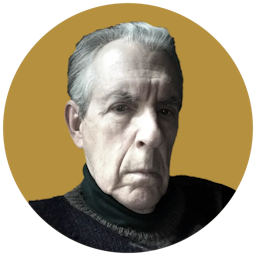An Evil Ambition To Cure
This article is from the archive of The New York Sun before the launch of its new website in 2022. The Sun has neither altered nor updated such articles but will seek to correct any errors, mis-categorizations or other problems introduced during transfer.

“Karl Brandt: The Nazi Doctor, Medicine and Power in the Third Reich” (Continuum, 400 pages, $29.95) is the first full biography of Hitler’s escort physician, who became the Reich Commissioner for Health and Sanitation, and the “Medical Supremo” responsible for Germany’s infamous euthanization program and the horrifying medical experiments in concentration camps.
The Nuremberg trial judges declared that Brandt was guilty of crimes against humanity, rejecting his defense that euthanasia was a humane alleviation of human suffering and that the S.S. administrators bore full responsibility for whatever happened to inmates. He went to the gallows on June 2, 1948, the first of seven men condemned to death in the famous Doctors Trial.
Nothing in Ulf Schmidt’s meticulously researched, if poorly written, book challenges the findings at Nuremberg. The chief value of Mr. Schmidt’s biography is that he explores in excruciating detail how an idealistic man such as Brandt, who once applied to work with Alfred Schweitzer in Africa, came to believe in the virtue of mass murder. Just as important is Mr. Schmidt’s argument that biography “can overcome the tension between depicting ‘everyday normality,’ on the one hand, and unprecedented levels of violence and ‘political criminality’ in the Third Reich, on the other.”
Brandt, a native of Alsace, grew up in a region claimed by both the French and the Germans, and felt humiliated after his Germany’s defeat in World War I. Following the lead of other family members, he was attracted to the study of medicine, regarding it as a way of benefiting humanity. He soon became attracted to figures such as Schweitzer, another Alsace native, who had built an international reputation as a quasi-messianic figure. In other words, Brandt could not resist leaders who had power, authority, and influence over masses of people. He had, in a word, an ambition to improve the human race.
Educated during the Weimar period, Brandt was exposed to eugenics, a “science” founded on the idea that the future of the human race depended on fostering the reproduction of healthy individuals and eliminating those that were defective. Euthanasia appealed to German doctors long before Hitler took power. And the key determinants in their thinking were race and community, not individuality. Individuals could be sacrificed, or euthanized, for the betterment of society as a whole. Institutions could better treat the healthy if the unhealthy were eliminated.
It might seem quite a switch from Schweitzer to Hitler, but as Mr. Schmidt shows, Hitler appeared as another messianic figure to the masses. Nazi iconography, superbly developed by filmmaker Leni Riefenstahl and others, depicted the Führer as a savior, descending from the clouds in his airplane or atop platforms towering over the cheering populace below him.
Meeting Hitler through the auspices of his wife, a famous athlete, Brandt quickly became part of the Führer’s inner circle, accompanying Hitler, a hypochondriac, on his many trips before and during the war. Mr. Schmidt is especially adept at explaining how Brandt absorbed Hitler’s style of “detached leadership.” Also known as plausible deniability, the Führer’s method of making decisions and delegating authority was to deliver roundabout lectures during which subordinates were supposed to glean what he wanted. Direct orders — even oral ones — were rare, which meant that Hitler’s “will” was subject to considerable interpretation. If he did not like or did not want to take responsibility for an action or policy, he could always claim he was misunderstood. Brandt, in his turn, learned to usurp ever greater control over the mechanisms of government without ever approving, in so many words, the euthanizing of more than 70,000 German civilians between 1939 and 1941, or the horrors perpetrated by the infamous Dr. Mengele at Auschwitz. Indeed, Brandt could deny knowing the names of such doctors, and in many instances, Mr. Schmidt suggests, Brandt would have been telling the truth.
But how could Brandt claim his conscience was clear? He believed individual suffering was alleviated via euthanasia, and that dying in an experiment meant helping humanity. Either way, Brandt felt he was in the clear. As Mr. Schmidt puts it, there “could be no meaning for the individual, unless the person’s death was considered to have meaning as a kind of ‘sacrifice’ for the sake of the community.”
Be patient with Mr. Schmidt. Phrases such as “the fact that” and “the ring of truth” occur with fatiguing regularity — not to mention passages first quoted, only to be then paraphrased. Despite these infelicities, he has produced an extraordinary study of an individual, a government, and an era that few biographies can hope to equal.

